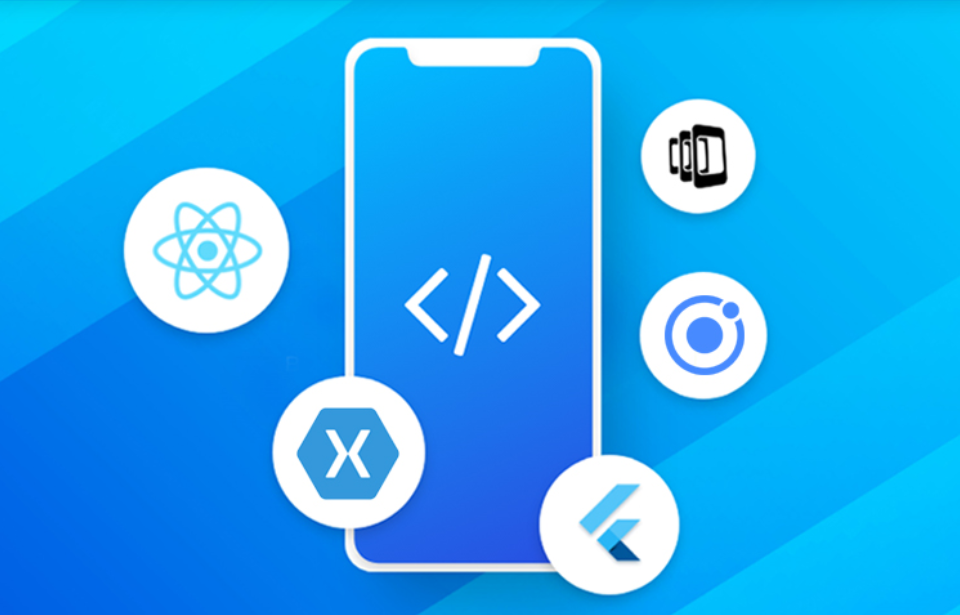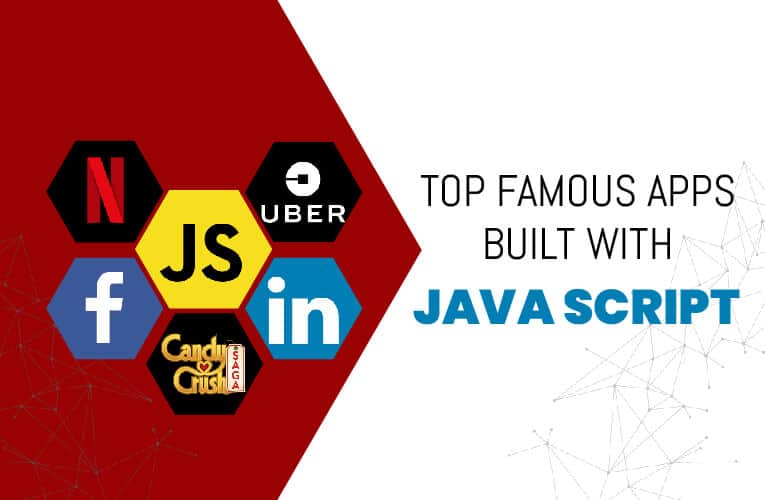You can take one of two development paths, based on the priorities of the upcoming smartphone application: create two or three native apps or one cross-platform app that is appropriate for multiple platforms at the same time. When you have great opportunity, little time, and a minimal budget, a cross-platform app is an ideal option for MVP (Minimum Viable Product). If your business wants a basic mobile application without complicated animations and features, another explanation for creating a cross-platform mobile app is.
Cross-Platform Development
Technology that overcomes all these drawbacks is supported by cross-platform growth. It refers to the creation of a single app that runs on multiple mobile platforms. This is done by creating an interface for React Native and Dart, for Flutter, using a universal programming language, such as Javascript.
Cross-platform architecture aims to optimise development, time, and capital costs while increasing the productivity and success of mobile applications.
Well, if a developer produces a native app, they must use the unique programming language of the said platform to produce an app for Android and iOS. Similarly, the developer wants to use unique languages that the platform understands to create an interface for the following platforms:
- For iOS: Objective C or Swift
- For Android: Java
- For Windows: C# and XAML
Why Cross-Platform App Development Framework
Organizations have been working to shift jobs digitally for the last two decades. Today, mobile apps are used for staff monitoring and day-to-day relations. Since it’s much easy now to create a smartphone app. Thus, in the new workplace, cross-platform software production is becoming a must.
As the gap between work and life declines, work at home and recreation are becoming a fruitful option for workers. For both staff and management, it is a win-win approach. There is more innovative flexibility for workers, and employers save on investment in technology.
But the main challenge is the convergence of multiple devices and systems, such as iOS, Linux, Windows, etc. It is here that we turn to the creation of cross-platform applications.
A cross-platform software requires several devices to interact with the programme. Any of the methods that follow are:
- Hybrid apps.
- Rapid mobile app development.
- Windows universal apps.
- Progressive Web apps.
In addition, cross-platform applications outsmart native applications in several critical ways, which we will address in the following sections.
Benefits of Cross-Platform development for your business
You can lower your expenses with cross-platform growth. As we have already discussed above, when creating an app, mobile app developers do not need to code in many different languages. In addition, it is important to correct the vulnerabilities that are seen in the reigning code base only once. This saves you the money you would have expended in creating applications on separate platforms.
- It does not take as much time to build a single platform as it does to develop two or three platforms, so the time to market is shortened.
- A developer creates an app that is familiar with the development software, as they deploy standard programming languages.
- For prototyping, a cross-platform framework is ideal as it allows a quicker time to market your app on more than one platform.
Cross-platform growth over the years has been influential in being one of the most useful developments in the development of applications. Developers are allowed to use the same code to build applications on different devices, thereby saving time, efforts to develop the software, and, of course, production costs.
Best Cross-Platform App Development Tools
A critical aspect of creating a successful app is choosing the best cross-platform app development providers. Today, the industry has several cross-platform platforms available. Any structure has its advantages and drawbacks, so selecting one instrument can be difficult. This problem we appreciate. We have put together a couple of the best cross-platform application platforms for 2021 and their capabilities in this report. Let us go one by one through them.
- React Native
One of the most well-known cross-platform software development systems is React Native. Both iOS and Android are appropriate. Facebook Inc. produced Respond Native in early 2015 and its own culture is continuously improving. It is based on React and doesn’t use the technology of WebView and HTML. There are platform components in JSX instead of HTML, and it has CSS-like polyfills instead of CSS. Plus, there is no API for DOM. React Native incorporates the best JavaScript and React.JS features. In addition, it allows developers the option to use Objective-C, Swift, or Java to build certain pieces.
Main advantages:
- Build software for various Android, Android TV, iOS, macOS, tvOS, Mobile, Windows, and UWP platforms.
- It is open-source and usable because, if there are any bugs, it has a wide community to help and develop it.
- React Native focuses on UI and facilitates the development of a highly responsive interface by software developers.
Developer’s tools
- JS editor;
- Xcode and $100 per year per developer account to build and publish apps;
- Android Studio, SDK, Emulator.
- Xamarin
Xamarin is also a free, open-source, cross-platform app application, as is React Native. It was created as an independent platform in 2011, but was purchased by Microsoft five years later.
Xamarin is somewhat different from other systems that are cross-platform. It is based on the .NET platform’s open-source implementation, Mono. This implementation requires a C# parser, runtime, and main .NET libraries of its own. The purpose of the project is to allow programmes written in C# to run on non-Windows operating systems, Unix, Mac OS, and others.
This framework consists of several main parts:
- Xamarin.IOS is a C# class library that provides developer access to the iOS SDK.
- Xamarin.Android is a C# class library that provides developer access to the Android SDK.
- Compilers for iOS and Android;
- Xamarin Studio IDE;
- .NET Framework;
- Plugin for Visual Studio.
Main advantages:
- Framework for free and open-source.
- Xamarin is very straightforward to use, unlike many other cross-platform application development systems, since it is enough to grasp the world of C# and .NET.
- It has a wide group of businesses and donors.
Developer’s tools
- Xamarin Studio;
- Visual Studio Code.
- NativeScript
NativeScript is an open source, cross-platform tool that helps you to use XML, CSS, and JavaScript to build cross-platform applications. NativeScript applications, in addition to JavaScript, are designed using any language that transpiles to JavaScript, such as TypeScript, and AngularJS and Vue.js are supported. On both the iOS and Android platforms, NativeScript is sufficient. Unlike using certain other cross-platform applications, you do not need to add any plugins to control the camera, GPS, etc. with Native Script.
Main advantages:
- NativeScript supports AndroidArsenal and Cocoapods for all elements.
- Calling native methods from native libraries is supported.
- Instead of WebView, NativeScript uses a native platform rendering engine, meaning it has a fully native user interface.
- To use platform-based APIs, you don’t need to know Java or Objective-C, since you can write anything in JavaScript.
Developer’s tools
- CLI NativeScript.
- PhoneGap
PhoneGap is another fantastic cross-platform software creation framework. It was developed by Nitobi Software in 2005, which Adobe acquired in 2011. JavaScript, HTML5, and CSS3 are the foundation of PhoneGap, which makes it very convenient for web and software developers to use. It also supports a lot of various devices, from Windows, Bada, and Blackberry to iOS and Android.
It has a powerful back-end system which greatly speeds up the process of production. It is ideally suited for the development of basic smartphone apps that do not use native mobile phone features extensively.
Main advantages:
- On multiple platforms, applications created with PhoneGap reveal minor variations.
- JavaScript, HTML5, and CSS3, the most basic and very popular web technologies, are powered by PhoneGap.
- The platform helps you to use embedded payment mechanisms in the app via the Android Google Play Store, iOS App Store, etc.
- To control interaction, mobile app developers may use legacy JavaScript or any other libraries, such as Prototype, jQuery, MooTools, Sencha Touch, and others.
- Appcelerator
Another cross-platform development framework that can be used to build, launch and validate a mobile application’s features is the Appcelerator. As a universal code mechanism, it makes use of JavaScript.
This means that it is possible to use the same code to build apps for different devices, such as iOS, Android, and Blackberry. It is the best choice for quick development of an app in JavaScript with an experienced developer.
Along with Arrow DB, Appcelerator includes a schema-less database that helps you to instal data models with zero configuration attempts. It also provides Salesforce, MS Azure, MongoDB, MS SQL, and Box pre-built integration. The newer version takes care of the earlier speed and latency problems.
Remarkable Features :
- The titanium construction makes it cost-effective,
- To pack, deliver and analyse cloud resources
- The customer has access to the fundamental source code at any time.
- Flutter
Flutter, developed by Google and launched in May 2017, is one of the youngest cross-platform software frameworks. It is a free, cross-platform open-source project that helps you to build a single code collection of smartphone applications. Its distinguishing characteristic is that it uses the Dart programming language, and Flutter does not use JavaScript at all, unlike many cross-platform software implementations that are known today.
You can change the code and see the effects in real time, thanks to Flutter’s Hot-Reload. Updating the app itself takes only a few seconds. You can develop mobile cross-platform applications for iOS, Linux, and other less common mobile devices with Flutter. It is worth remembering that today this is the only way for the Fuchsia OS to construct a submission.
Main advantages:
- Flutter-created mobile applications are fast and highly effective. Compared to other cross-platform app architectures, using Flutter gives more significant performance benefits.
- Flutter has a graphics engine of its own (no need to make the interface separately for Android and iOS).
- Dart helps you to write a computer code that is much more formal, so you can construct more sophisticated programmes and hierarchical structures.
Developer’s tools:
- Android Studio;
- VS Code;
- Emacs.
- Ionic
Ionic is yet another open-source cross-platform application. In 2013, Max Lynch, Ben Sperry, and Adam Bradley of Drifty Co. made Ionic. The initial version was released in 2013 and AngularJS and Apache Cordova were developed on top of it. Web apps built for the Ionic Platform are hybrid HTML applications according to the Apache Cordova principles. These types of apps run on mobile phones in a special shell (UIWebView for iOS and WebView for Android) that lets you display HTML and run JavaScript.
Advantages:
- Everything you need to begin creating is knowledge of Angular, HTML, CSS, and JavaScript.
- Many ready-made UI components are available and are simple to use.
- Lots of features for using native cell phone plugins.
- Node.js
Node.js (or just Node) is a cross-platform application built on V8 that converts JavaScript into a general-purpose language from a highly specialised language. Node offers a runtime on the server side that compiles and runs lightning-speed JavaScript. Instead of reading or executing it as a bytecode, the V8 engine compiles JavaScript into machine code, which makes Node.js very fast.
Advantages:
- The V8 engine tests the limits relentlessly and is one of the planet’s best complex language interpreters.
- You can execute all the database queries at once with Node.js, which eliminates response times for sluggish requests.
- Node.js has a tremendous culture.
- Felgo
Felgo is a cross-platform development SDK that is easy to use and that runs on the Qt system. Qt, a famed C++ application, is commonly used by developers. This Qt centre is improved by Felgo with an interface and game elements. Analytical software, in-app ordering plugins, and so on make it a standalone platform.
Felgo is one of those growing mobile app creation tools for cross-platforms. For the young generation of developers, it is really common today. The appealing aspect is that if you don’t make a profit from your business, they won’t charge you.
Felgo draws the interest of mainstream developers because they can save 90% of Felgo’s coding relative to Xamarin and ReactNative. It is heading towards the top spot in offering adequate resources for a secure, time-saving, and beginner-friendly website.
What makes it Unique?
- Native, cross-platform applications that are quicker and amazing with excellent UIs
- Build a powerful framework for embedded systems using C++ and JavaScript
- Using an in-game level editor, multiplayer, and Felgo cloud services to create games more easily.
- Perform live reloading of codes from Windows, Linux, and Mac, at one reload per second.
- Solar2D (Corona SDK)
Corona SDK was an open-source cross-platform app application that was very well-known and fully free. Unfortunately, the Corona SDK is no longer supported, but a new game system named Solar2D has recently been launched by its developers.
Solar2D is a free and open-source cross-platform app application, like its ancestor. It enables you to build smartphone games for different computers, such as iPhones, tablets and Android phones, iPads, Amazon Fire, desktops, wired TVs, and more.
Advantages:
- Solar2D is based on a language that renders it fast and efficient with Lua scripting.
- With Solar2D Native, any native library or API can be called (C/C++/Obj-C/Java).
- Solar2D supports several in-app advertisement extensions, analytics, newspapers, etc.
Conclusion
We hope you have been helpful with the list of the best cross-platform software development systems, their descriptions, and the benefits. Based on its functionality and the demands of your project, this article would encourage you to select one technology that fits your needs.
If you find like cross-platform applications are only acceptable for start-ups and small enterprises, look at cross-platform apps like Google Advertising, Instagram, Pinterest, Skype, or Wikipedia.












